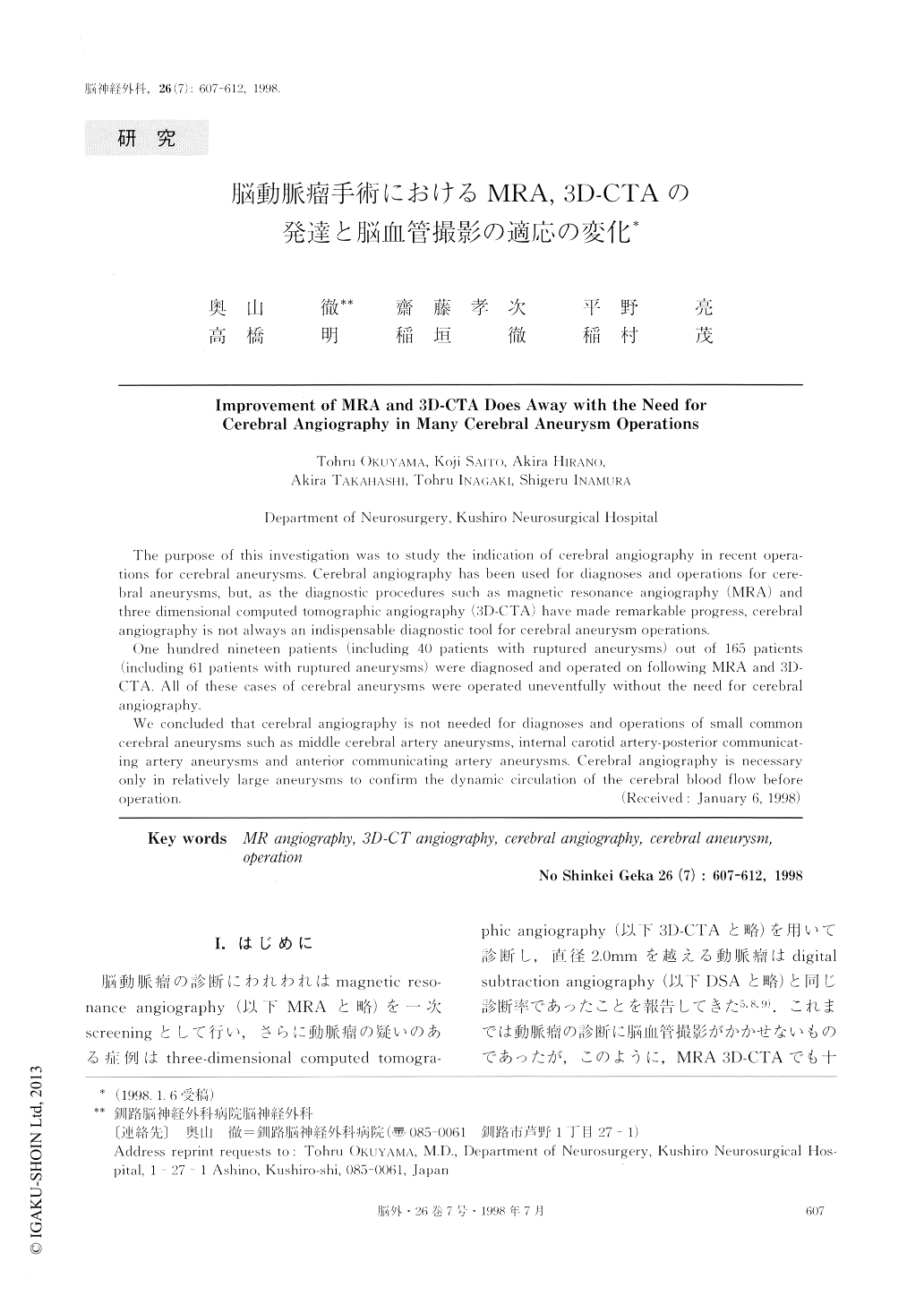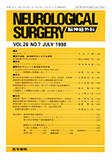Japanese
English
- 有料閲覧
- Abstract 文献概要
- 1ページ目 Look Inside
I.はじめに
脳動脈瘤の診断にわれわれはmagnetic reso-nance angiogralphy(以下MRAと略)を一次screeningとして行い,さらに動脈瘤の疑いのある症例はthree-dimensional computed tomogra-phic angiography(以下3D-CTAと略)を用いて診断し,直径2.0mmを越える動脈瘤はdigitalsubtraction angiography(以下DSAと略)と同じ診断率であったことを報告してきた5,8,9).これまでは動脈瘤の診断に脳血管撮影がかかせないものであったが,このように,MRA 3D-CTAでも十分であり,ときにはこれらの検査が脳血管撮影に優れる例も報告されている2,10).このようなことから脳血管撮影を行わずに脳動脈瘤の手術を行った報告1,4,7,8)もあるが,どのような例に必要なのかさらに検討を要すると考えられる.著者らの施設では,これまでの経験をふまえ原則として1995年11月からは破裂,未破裂にかかわらずなるべくMRAと3D-CTAで診断し,DSAを行わずに手術を行っている.この期間に破裂動脈瘤61例,および未破裂動脈瘤104例計1651列の手術を行い,このうち119例がDSAを行わず,残り46例は術前DSAを行った.これら165例の脳動脈瘤について脳血管撮影の必要性について再検討し,脳血管撮影の新たな適応について考察したので報告する.
The purpose of this investigation was to study the indication of cerebral angiography in recent opera-tions for cerebral aneurysms. Cerebral angiography has been used for diagnoses and operations for cere-bral aneurysms, but, as the diagnostic procedures such as magnetic resonance angiography (MRA) andthree dimensional computed tomographic angiography (3D-CTA) have made remarkable progress, cerebralangiography is not always an indispensable diagnostic tool for cerebral aneurysm operations.
One hundred nineteen patients (including 40 patients with ruptured aneurysms) Out of 163 patients(including 61 patients with ruptured aneurysms) were diagnosed and operated on following MRA and 3D-CTA. All of these cases of cerebral aneurysms were operated uneventfully without the need for cerebralangiography.
We concluded that cerebral angiography is not needed for diagnoses and operations of small commoncerebral aneurysms such as middle cerebral artery aneurysms, internal carotid artery-posterior communicat-ing artery aneurysms and anterior communicating artery aneurysms. Cerebral angiography is necessaryonly in relatively large aneurysms to confirm the dynamic circulation of the cerebral blood flow beforeoperation.

Copyright © 1998, Igaku-Shoin Ltd. All rights reserved.


